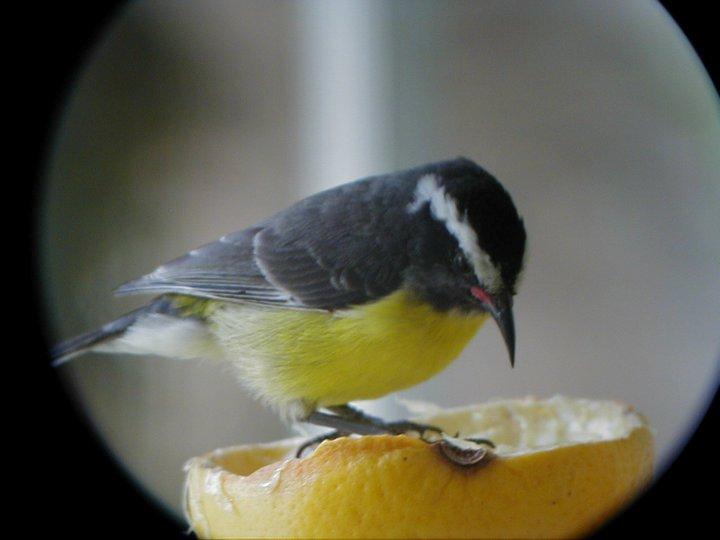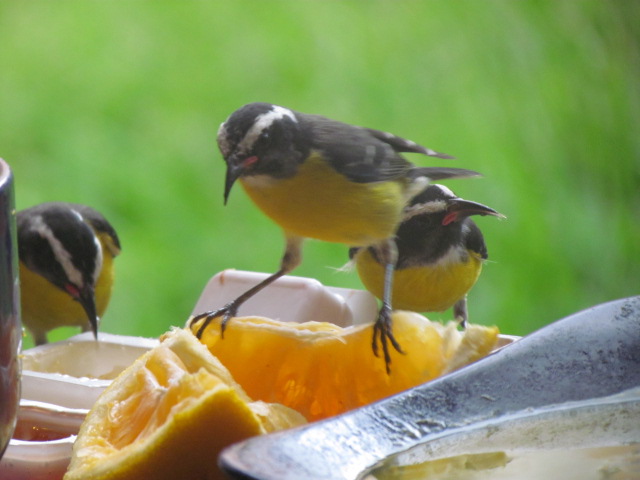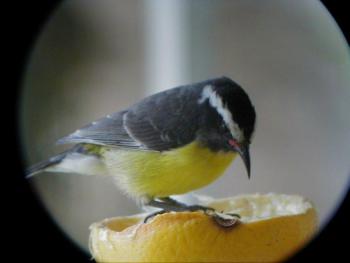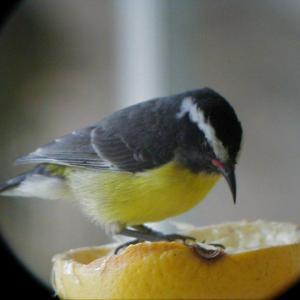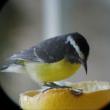Chickadees of the Caribbean
We just returned from a vacation on the island of Aruba where, along with the warm weather, we enjoyed seeing many of “our” birds on their winter grounds.
There were lots of the long-legged shorebirds, greater and lesser yellowlegs, which grace our shores in spring and fall. They happily dart around in the shallow muddy salinas for food. We saw ospreys, too, and wondered if any of them were friends from Maine now feasting on tropical fish. A few flocks of barn swallows even showed up, all looking a little tattered as if the journey down had not been overly easy.
It is always fascinating and eye-opening to see these familiar species in different surroundings. But of course it is also a delight to see the resident species that we can’t see in Maine.
Aruba has an interesting mix of bird species because of its location just off the Venezuelan coast. Some of the species are more Caribbean in origin while others are species that occur in northern South America. A favorite of ours is the bird we call the “chickadee of the Caribbean” – the Bananaquit, chibichi, as the locals call them.
This bird is just a bit bigger than a chickadee, but with bright yellow undersides and black on top and reddish at the base of its curved bill. Like chickadees in our area, it is one of the most common birds on the island and will come in to feed on fruit and juice you put out on the patio for them.
At open-air restaurants they are even known to come in and poke holes in the sugar packets on tables (and have learned to go for the real thing, avoiding sugar substitutes)!
Another southern counterpart on Aruba is the tropical mockingbird, which looks very similar to our Northern mockingbird but does not have the same abilities to mimic other species. It is, nonetheless, just as noisy and persistent a singer, and its loud and pleasant song is usually the first bird to be heard in the predawn hours. On our hotel grounds, we saw one group of recently fledged young mockingbirds being fed by their parents.
Unlike here in Maine, the resident species on Aruba may nest just about any time of year when conditions are right. We found a number of nests of the black-faced grassquit during this last visit. We think of the grassquit as a tropical version of our dark-eyed junco. It is similar in size (maybe just a tad smaller) and dark like our junco, and it feeds on seeds on the ground like our junco.
The nests are a little different, though. The grassquit weaves grasses into a globe with a hole on one side, a few feet off the ground in a bush or cactus rather than an open cup well-hidden on the ground, as our junco makes.
And of course there are hummingbirds. But instead of Maine’s well-loved ruby-throated hummingbird, Aruba has the tiny blue-tailed emerald and the rather large and extravagantly named ruby-topaz hummingbird.
We had great fun comparing the birds of these two vastly different places but it was nice to arrive home and wake the next morning to the familiar “chick-a-dee-dee-dee” welcoming us back.
Dr. Jeff Wells is the senior scientist for the Boreal Songbird Initiative. During his time at the famed Cornell Lab of Ornithology and as the Audubon Society's national bird conservation director, Dr. Wells earned a reputation as one of the nation's leading bird experts and conservation biologists. Jeff's grandfather, the late John Chase, was a columnist for the Boothbay Register for many years. Allison Childs Wells, also formerly of the Cornell Lab of Ornithology, is a widely published natural history writer and a senior director at the Natural Resources Council of Maine. Together, they have been writing and teaching people about birds for decades. The Maine natives are authors of the highly acclaimed book, “Maine's Favorite Birds.”
Event Date
Address
United States

